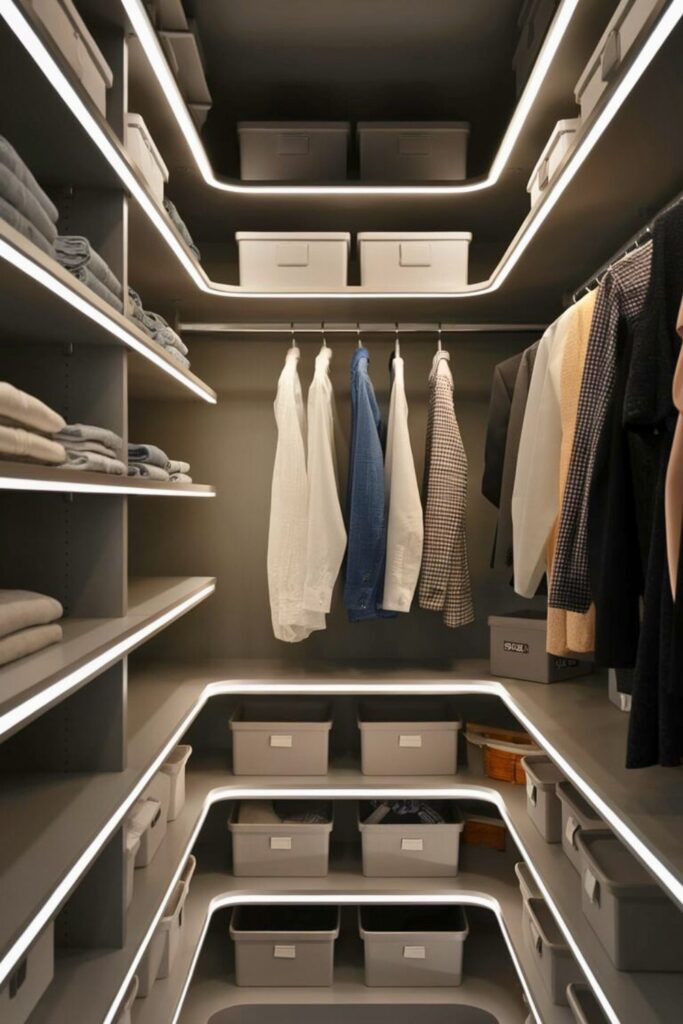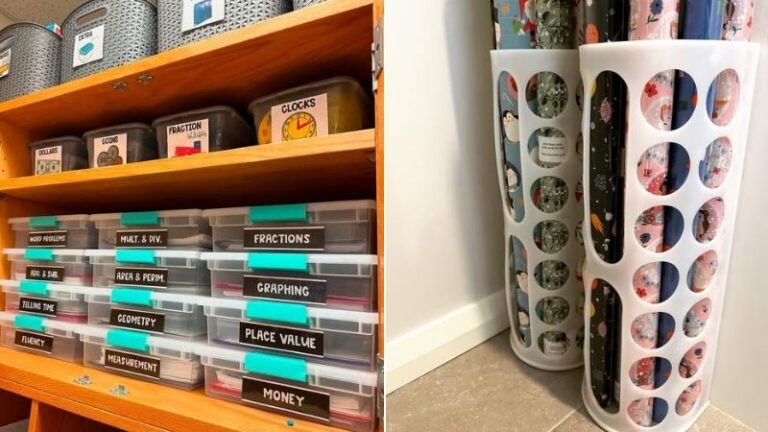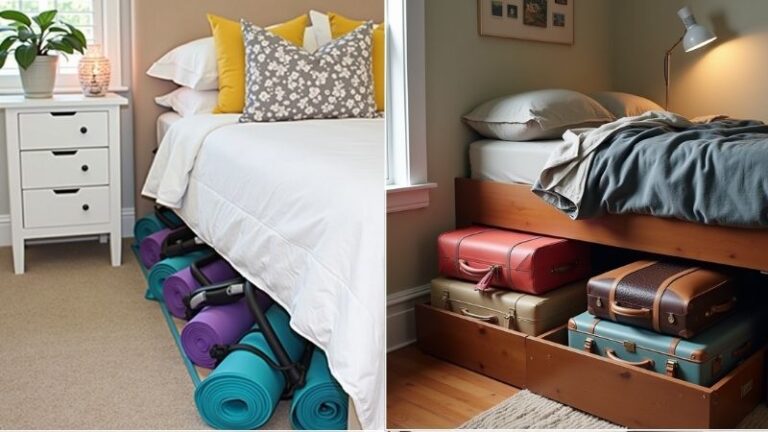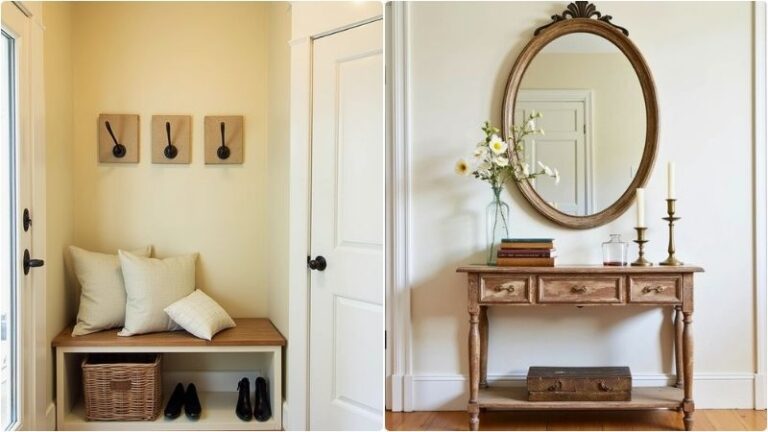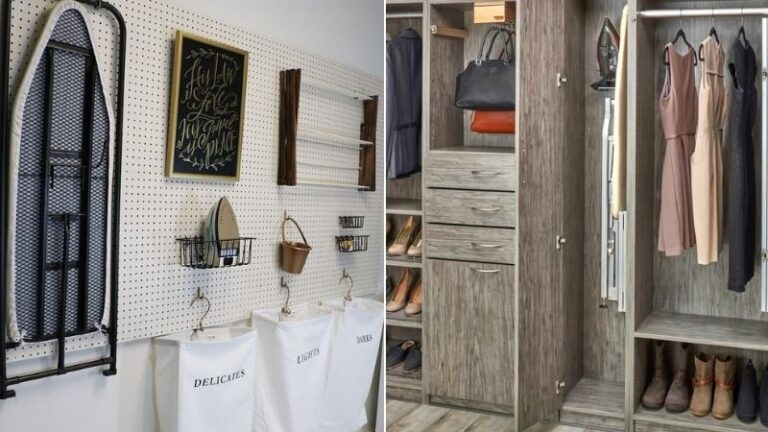26 Tiny Closet Organization For 2025
Maximizing space in a tiny closet can be a challenge, but with the right organization strategies, you can create a tidy, functional area without feeling overwhelmed.
Whether you’re dealing with limited square footage or simply need more room for your belongings, clever solutions can make even the smallest closet feel spacious and well-organized.
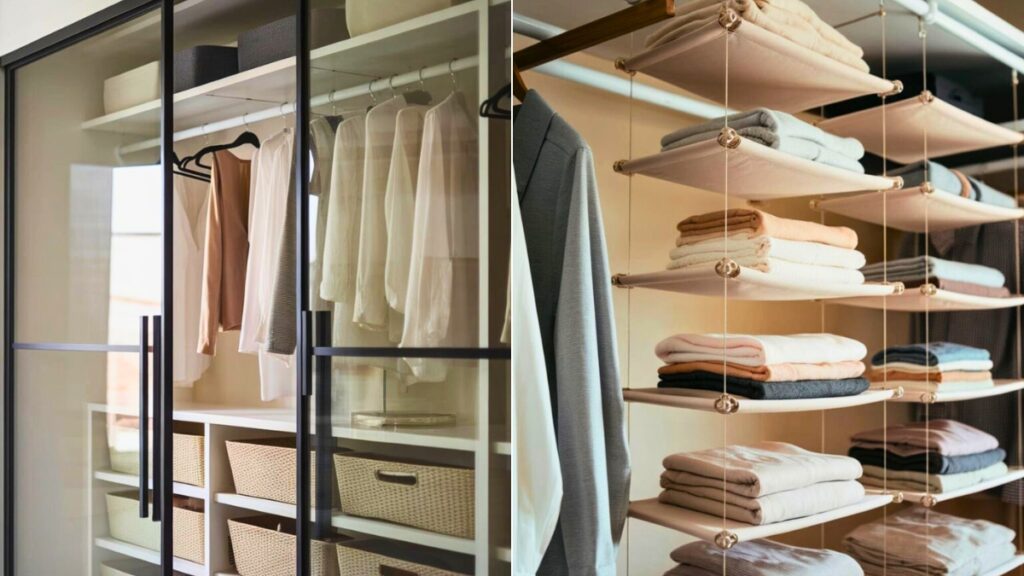
In this article, we’ll explore 26 practical tiny closet organization ideas that are easy to implement and highly effective.
These tips will help you streamline your wardrobe, store items efficiently, and maintain a clean, accessible space.
Let’s jump right into it!
Tiny Closet Organizations

1. Install Double Hanging Rods
If your closet lacks enough hanging space, double hanging rods can maximize vertical space. Install a second rod below the top one to hang shorter items like shirts and blouses.
This effectively doubles your storage for hanging clothes.
The key benefit of this idea is making better use of underutilized space in your closet.
By creating two tiers of hanging space, you can avoid cramming clothes together on a single rod, making your wardrobe more accessible.
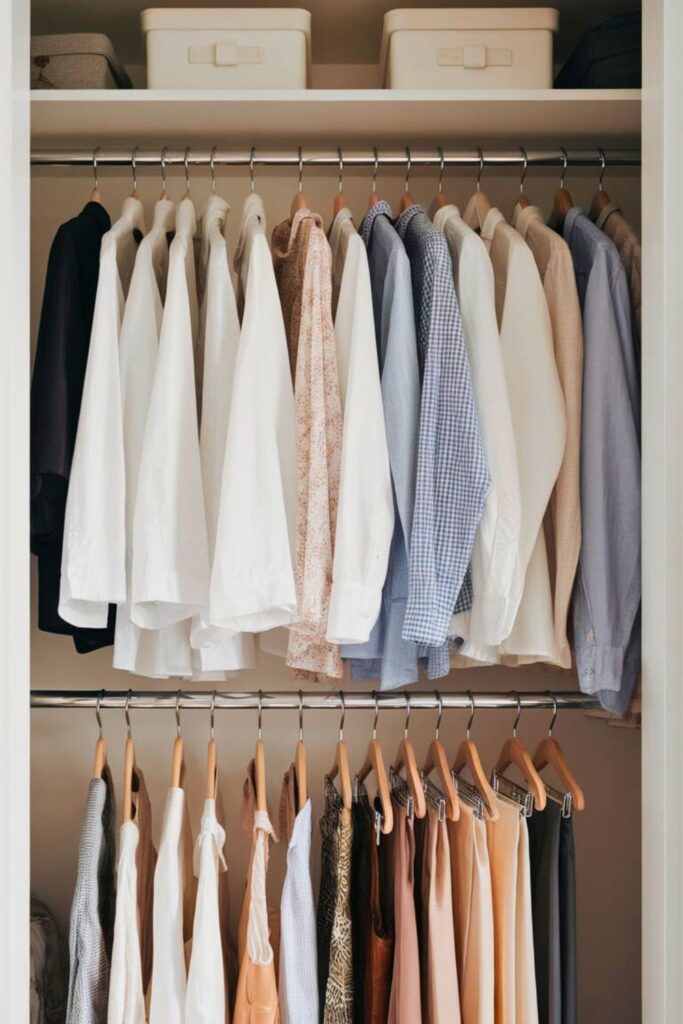
2. Use Shelf Dividers
Shelf dividers are an easy way to keep your closet organized. By placing these dividers between folded stacks of clothes, you can prevent them from toppling over or blending into each other.
This works particularly well for sweaters, jeans, and t-shirts. Dividers help you maintain a tidy look and make it easier to find what you’re looking for without disturbing other piles.
Look for adjustable or slide-in dividers to customize the size of your storage sections. This allows you to adjust them to fit your specific shelving needs.
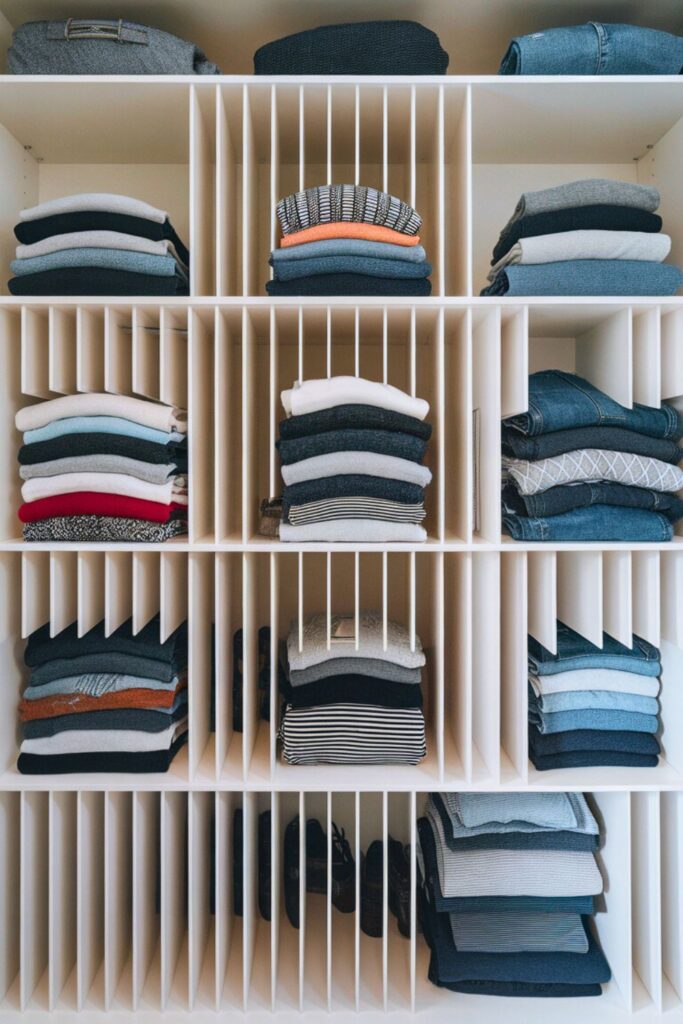
3. Add Over-the-Door Storage
Take advantage of the often-unused space behind closet doors with over-the-door organizers. These hanging solutions can store shoes, accessories, or even clothes in pockets, freeing up shelf space.
Over-the-door storage is especially useful for small items like scarves, belts, and jewelry. Since these items often get lost in the closet, dedicating a spot for them ensures they’re easily accessible.
Ensure that the organizer doesn’t add too much weight to the door, and choose one with clear pockets so you can see your items at a glance.
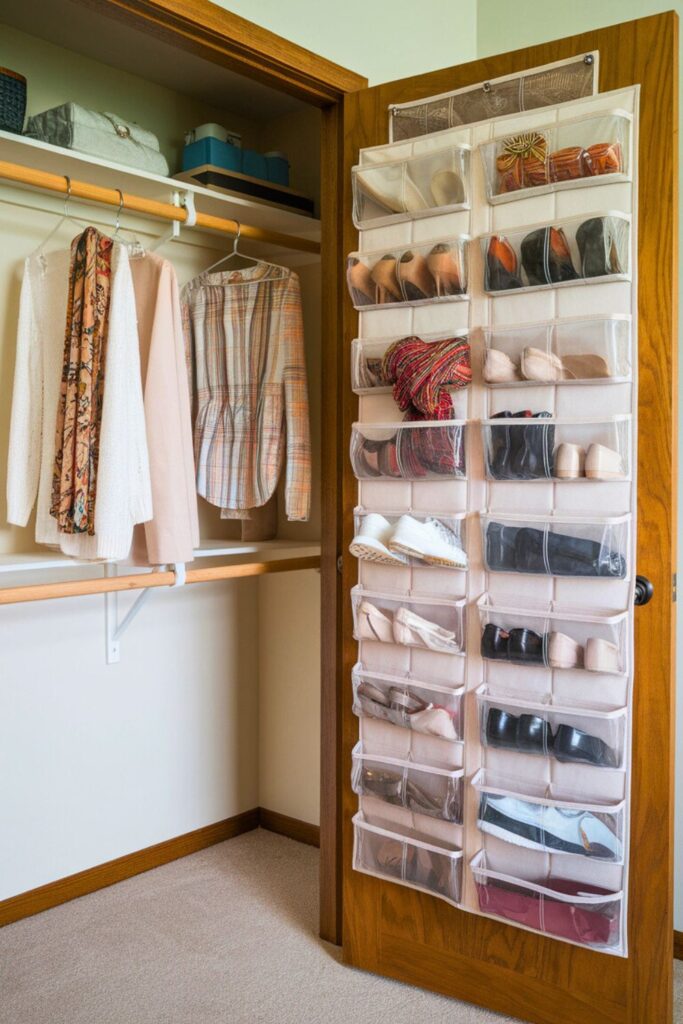
4. Use Slimline Hangers
Switching to slimline hangers can significantly free up closet space. These ultra-thin hangers take up far less room than bulky plastic or wooden hangers, allowing you to fit more clothes in the same amount of space.
Slimline hangers are typically covered in velvet, which prevents clothes from slipping off. This is especially important for delicate fabrics or wide-necked tops that easily fall from regular hangers.
By using these hangers, you also create a uniform look in your closet, which not only looks organized but helps keep your clothing evenly spaced.
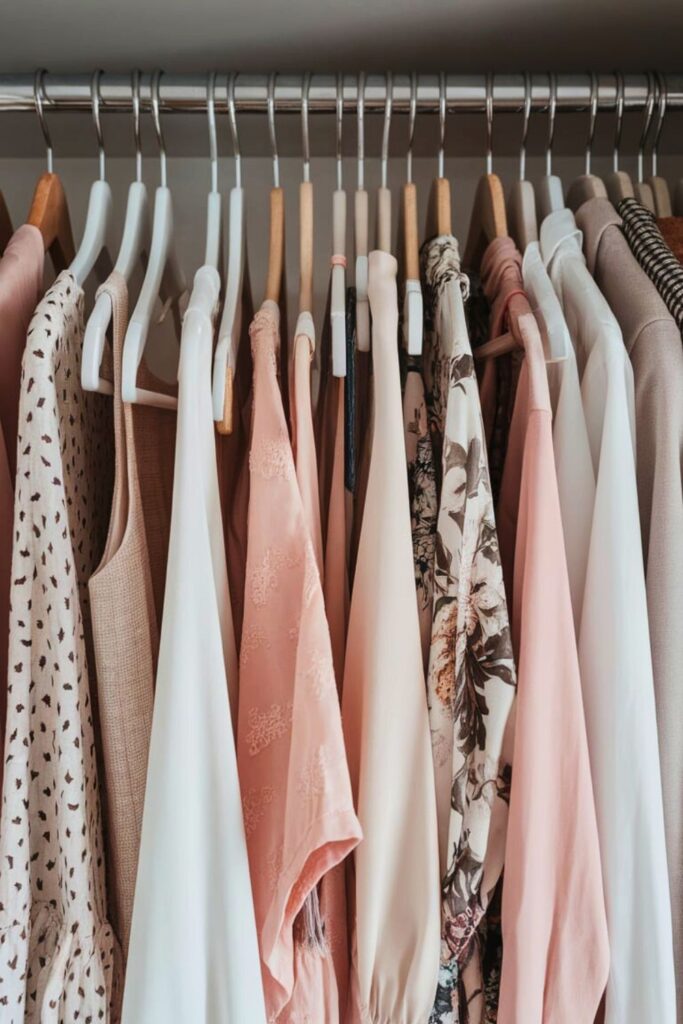
5. Install Pull-Out Drawers
Adding pull-out drawers in your closet can create designated storage areas for smaller items like socks, underwear, or accessories. Pull-out drawers are great for creating layers of hidden storage, helping keep your closet floor clear.
These drawers can be installed on the lower shelves of your closet or even under hanging clothes to make use of otherwise unused space. They’re especially helpful in maintaining tidiness for small or folded items.
Choose clear or labeled drawers to make it easier to locate items without rifling through everything inside.
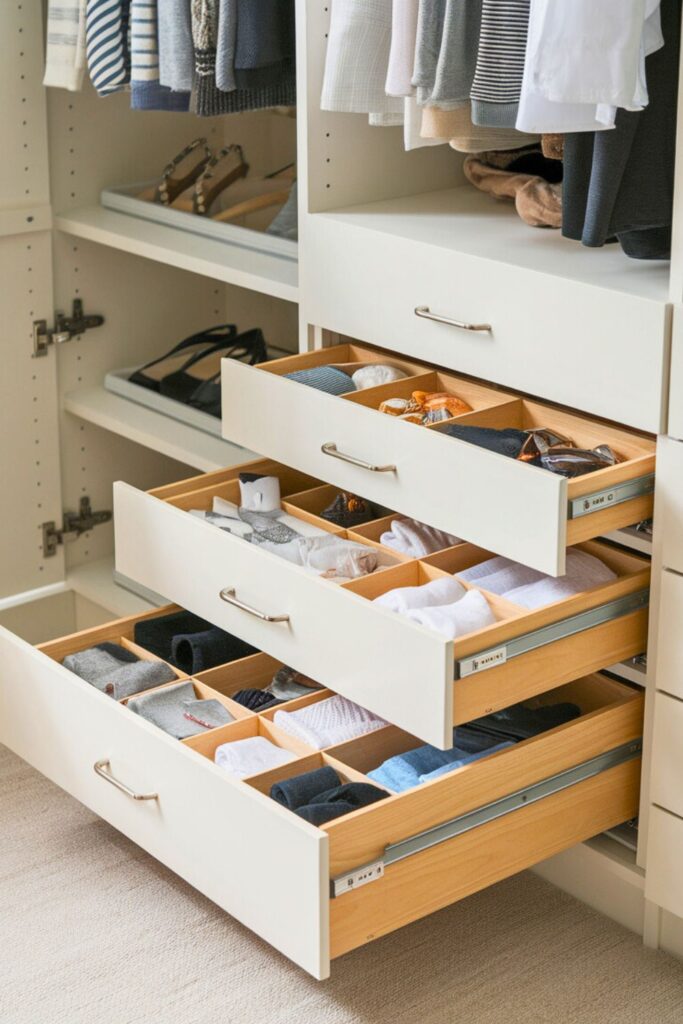
6. Add a Shoe Rack
A dedicated shoe rack can help keep your shoes organized and off the closet floor. Whether you place it on the floor or mount it on a wall, shoe racks ensure your shoes are stored neatly in pairs.
Shoes often take up valuable space in closets, so having a specific spot for them prevents clutter. You can find adjustable shoe racks that fit into smaller closet areas or choose vertical racks that hold more pairs.
Ensure the shoe rack has enough compartments or tiers to fit your entire collection, making it easy to pick out the right pair when needed.
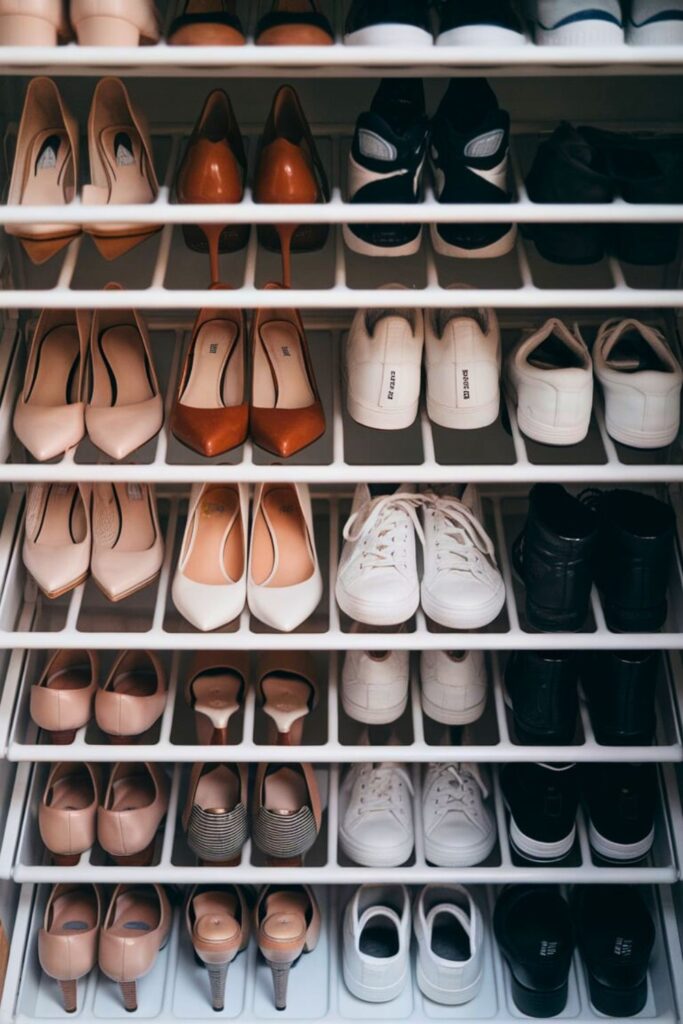
7. Install Hooks on Walls
Using hooks on closet walls can save space by keeping items like bags, hats, or belts off shelves and rods. These hooks can be installed at different heights to accommodate various accessories.
Hooks are simple yet effective, providing extra storage where you might not have thought to look. They’re perfect for items you frequently reach for, keeping them within easy access without cluttering your closet.
When installing hooks, make sure they are sturdy enough to hold heavier items and won’t damage your walls.
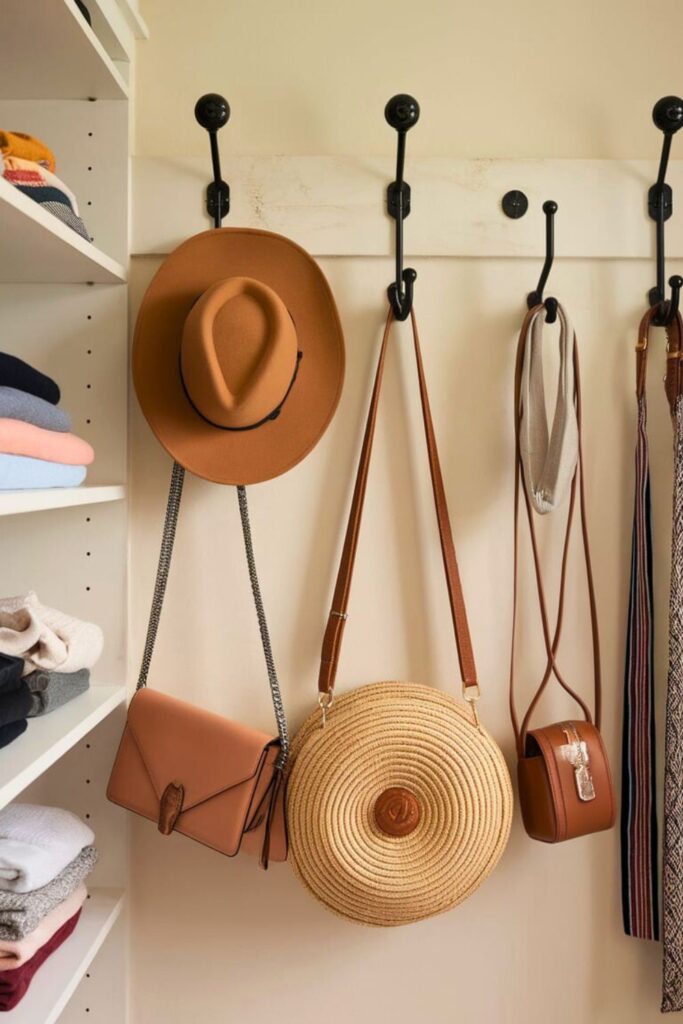
8. Use Clear Storage Bins
Clear plastic bins are a practical way to store off-season clothing or smaller items like scarves and hats. Clear storage bins allow you to easily see what’s inside, eliminating the need to rummage through each one.
Stack these bins on shelves to maximize space, and label them for even more organization. This method works well for closets with limited drawer space or for items you don’t need to access regularly.
Be sure to use stackable bins to make the most of your closet height, storing less-used items at the top and more frequently needed ones at eye level.
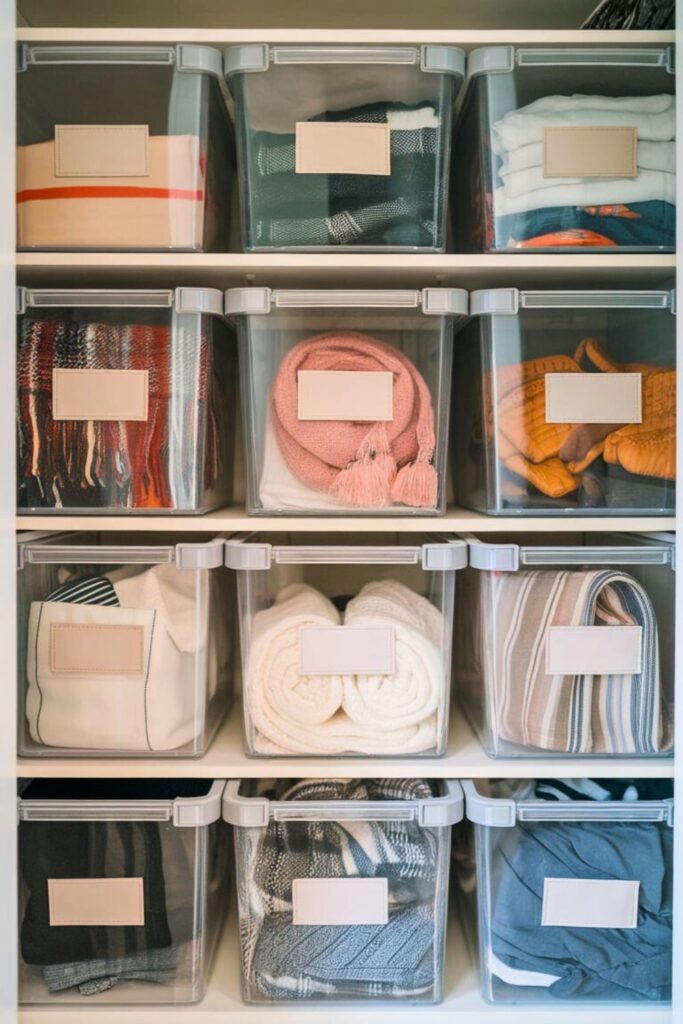
9. Hang a Pegboard for Accessories
A pegboard is a flexible solution for organizing accessories in a small closet. It can be mounted on the back wall of the closet to hang jewelry, scarves, and belts.
Pegboards allow you to customize your storage arrangement with hooks, bins, and pegs that fit your specific needs. This system helps avoid tangled accessories and ensures you can quickly find what you’re looking for.
Make sure to securely attach the pegboard to the wall and adjust the arrangement as needed to fit your growing accessory collection.
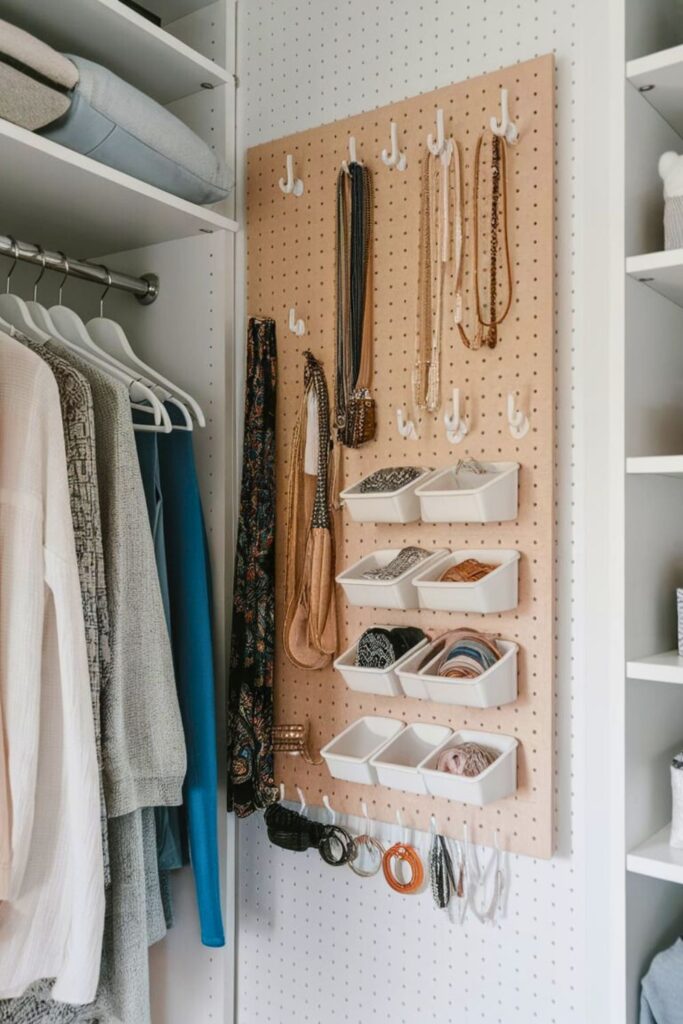
10. Invest in Hanging Shelves
Hanging shelves provide extra storage for folded clothes, shoes, or accessories. These fabric shelves are suspended from the closet rod, creating vertical storage without taking up additional floor space.
This is an ideal solution for items you don’t want to hang but don’t have shelf space for. The compartments keep everything visible and accessible, helping you stay organized.
Choose durable hanging shelves that can support the weight of your items without sagging over time.
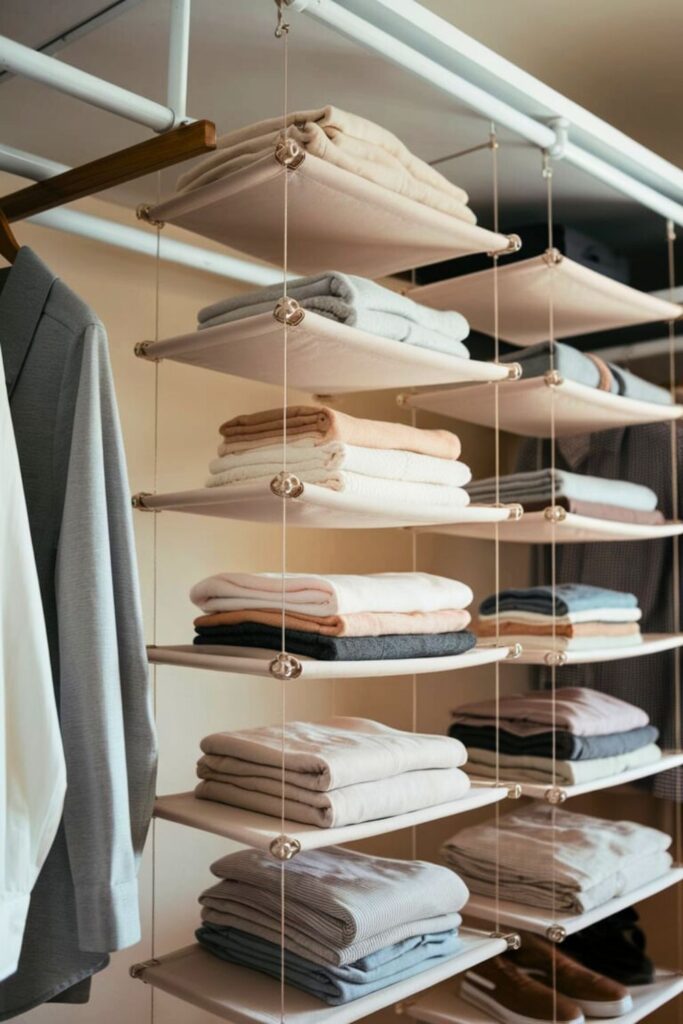
11. Add Baskets for Storage
Baskets are a great way to organize small items in your closet while keeping things visually tidy. Place them on shelves to hold items like socks, belts, or seasonal accessories.
Baskets come in various sizes, so choose ones that fit your closet space and needs. They’re especially helpful for grouping similar items together, making it easier to find what you need without creating clutter.
Label the baskets if needed, so you can easily identify what’s inside, and use them for items you don’t use daily but still want easy access to.
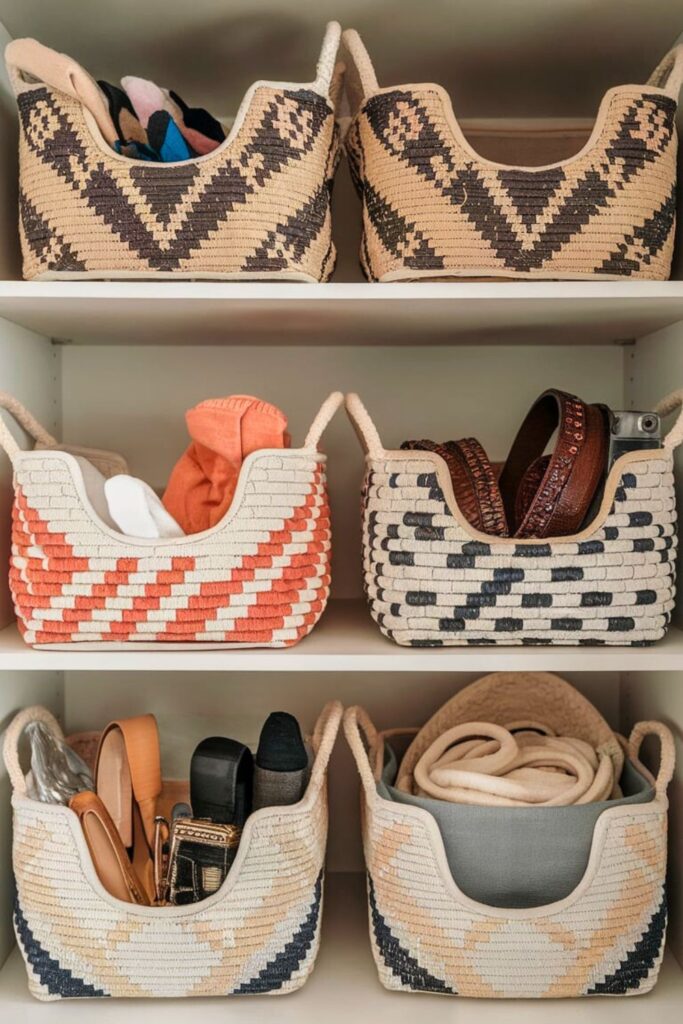
12. Create a Capsule Wardrobe
A capsule wardrobe focuses on only essential clothing pieces, which reduces closet clutter and makes it easier to organize. This method encourages you to rotate a small selection of high-quality, versatile clothes.
By paring down your wardrobe, you free up space for other items, creating a minimalist and functional closet. This approach is especially helpful in small closets, as it reduces overcrowding.
Focus on pieces that can be mixed and matched to create a variety of outfits, limiting the need for excessive storage.

13. Use Vacuum-Sealed Bags
For out-of-season clothes or bulky items like coats and blankets, vacuum-sealed bags are a space-saving solution. These bags compress the items, reducing their size significantly and making them easier to store in small closets.
Place the compressed bags on higher shelves or at the back of the closet, where they won’t take up prime space. This keeps bulky items out of the way until they’re needed again.
Ensure the bags are properly sealed to prevent air from getting in and expanding the contents.

14. Install a Rotating Closet Organizer
A rotating closet organizer makes accessing clothes in a small space easier. This type of organizer allows you to rotate sections of hanging clothes, giving you more efficient use of vertical and horizontal space.
Rotating organizers are ideal for maximizing the corners of closets or narrow spaces. They work well for hanging clothes, scarves, or ties without needing to dig through crowded rods.
Install the organizer securely to ensure smooth rotation, and use it to store clothing items you wear regularly for quick access.
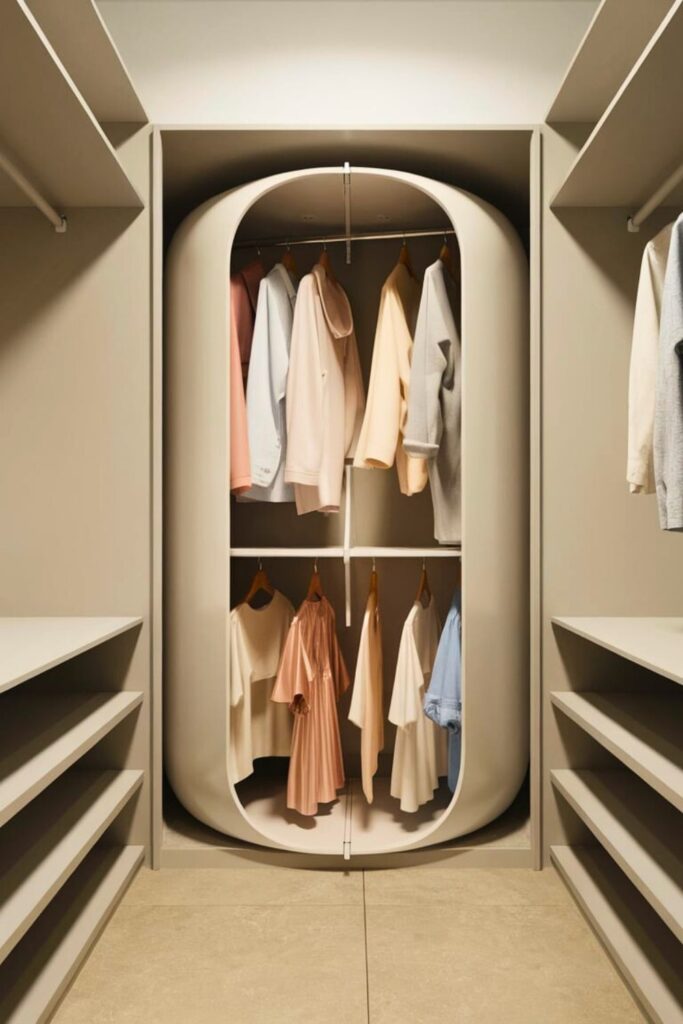
15. Label Shelves and Bins
Labeling is a simple yet effective way to keep your closet organized. Add labels to shelves, bins, and drawers to make it clear where everything belongs, helping maintain order.
This system works especially well in shared closets, where multiple people may be using the same space. Labels ensure everyone knows where to put and find items without disrupting the organization.
Choose clear, readable labels, and consider using adhesive tags that can be easily swapped out as your storage needs change.
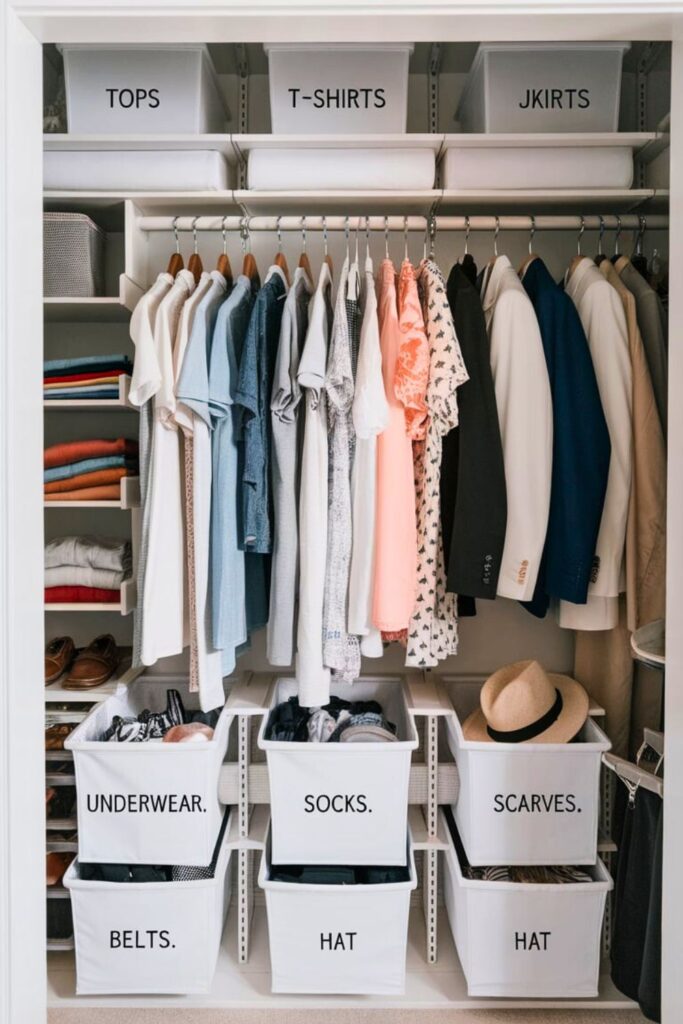
16. Use an Extendable Wardrobe Rod
An extendable wardrobe rod provides temporary extra hanging space when needed. These rods can be added underneath existing hanging clothes to accommodate shorter items like shirts and blouses.
Extendable rods are particularly useful for small closets as they provide additional hanging space without the need for permanent installations. They can be easily removed or adjusted based on your current wardrobe.
Ensure the rod is sturdy and properly secured to handle the weight of your clothes without sagging or falling.

17. Mount a Shelf Above the Door
Install a shelf above the closet door to store items you don’t use often, like hats, bags, or seasonal decor. This area is often underutilized but can provide extra storage for bulky or seldom-used items.
Make sure the shelf is securely mounted and can handle the weight of your items. This keeps the floor space and eye-level areas clear for things you access more frequently.
Choose a shelf that fits the size of your closet door frame, making it look neat and streamlined.
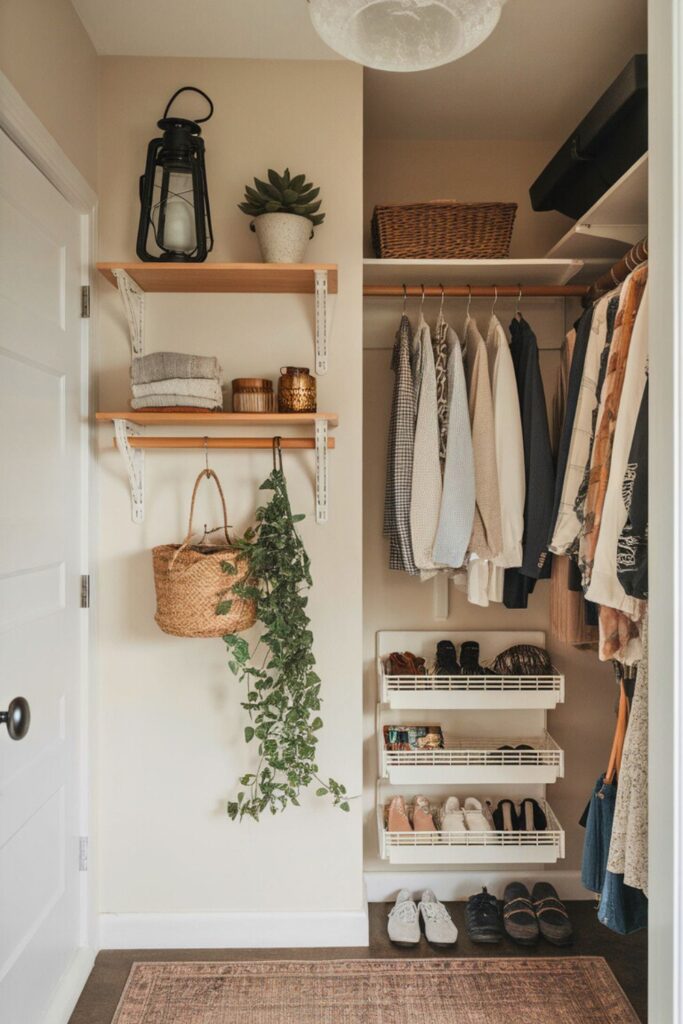
18. Use a Rolling Cart
A rolling cart is a versatile storage option that can fit under hanging clothes or inside closet corners. It provides extra drawer space for folded clothes, accessories, or shoes and can be easily moved when needed.
Rolling carts are especially helpful for closets without built-in shelves or drawers. Choose a cart with wheels, so you can roll it out of the closet when you need to access something from the back.
Opt for a multi-tiered cart to maximize vertical storage in a small space.
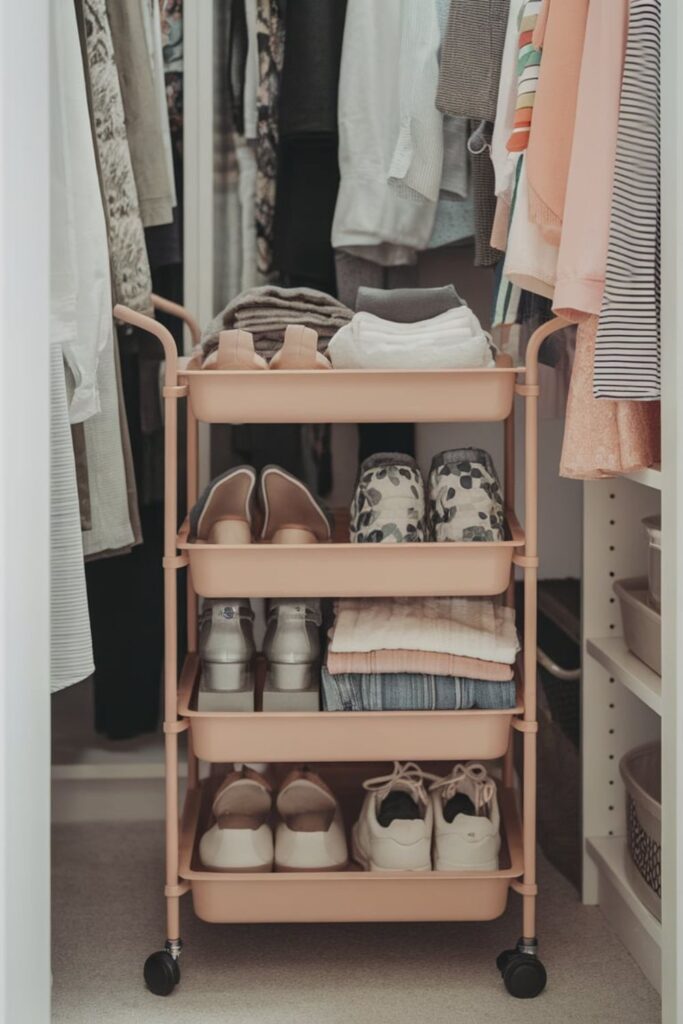
19. Install a Belt or Scarf Rack
Keep belts and scarves organized and untangled with a dedicated rack. These racks can be wall-mounted or hung on a closet rod, providing easy access to your accessories.
Belt and scarf racks save space by keeping these items off shelves and rods while also preventing them from getting wrinkled. Choose a rack with multiple hooks or loops to accommodate a variety of items.
Make sure the rack is placed at a height that’s easy to reach, ensuring quick access to your accessories.
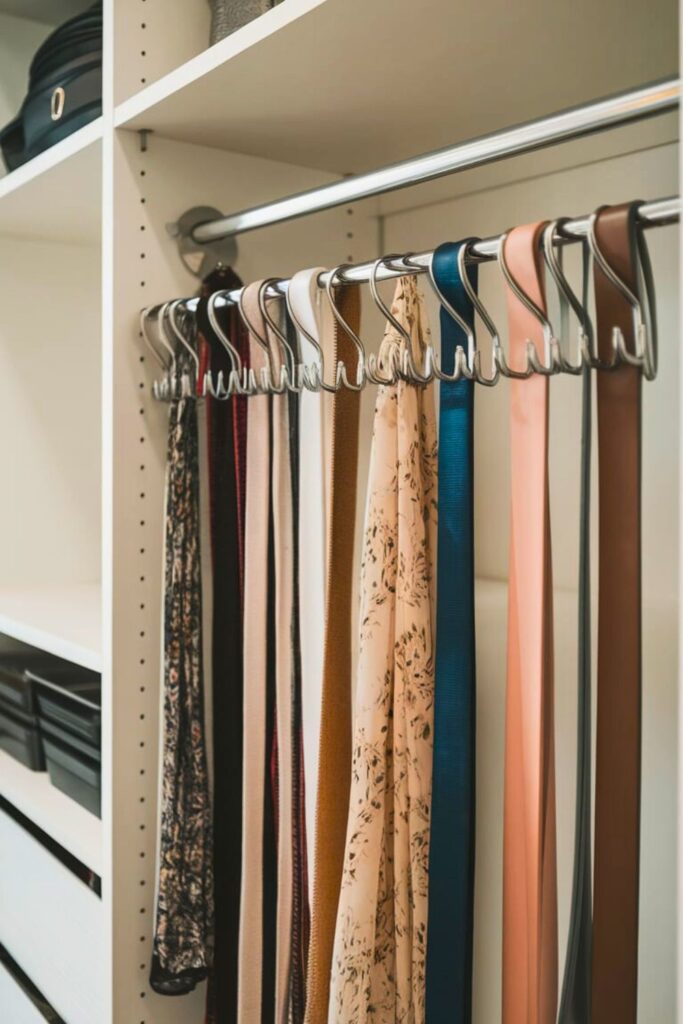
20. Add a Pull-Out Pants Rack
A pull-out pants rack is a space-efficient way to store pants without taking up hanging rod space. These racks can be installed on a closet shelf or at the bottom of the closet and can hold multiple pairs of pants.
Pull-out racks keep pants neatly folded and separated, allowing you to quickly access them without rummaging through piles. This type of rack also prevents pants from wrinkling or creasing.
Ensure the rack is securely installed and can handle the weight of multiple pairs of pants.
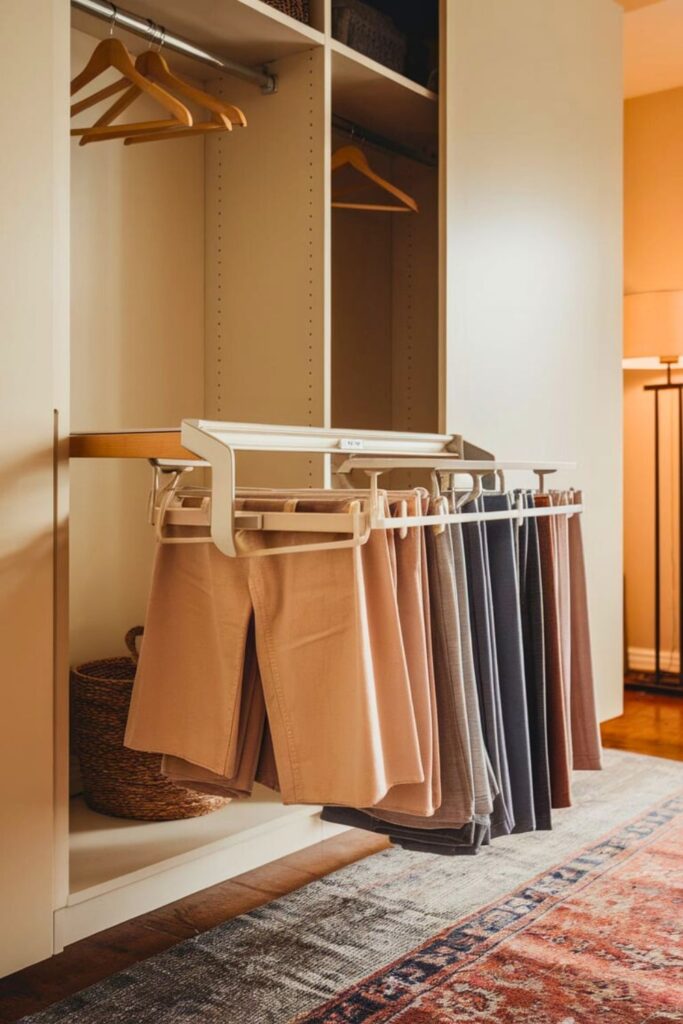
21. Utilize Shelf Risers
Shelf risers create extra storage space by adding a second level to existing shelves. These risers can be placed on any shelf to hold folded clothes, shoes, or accessories, effectively doubling your storage space.
Risers are perfect for closets with high shelves, as they make use of vertical space that often goes unused. Choose adjustable risers for more flexibility based on the height of your items.
Use shelf risers to keep smaller items separated and organized, making everything easy to find and access.
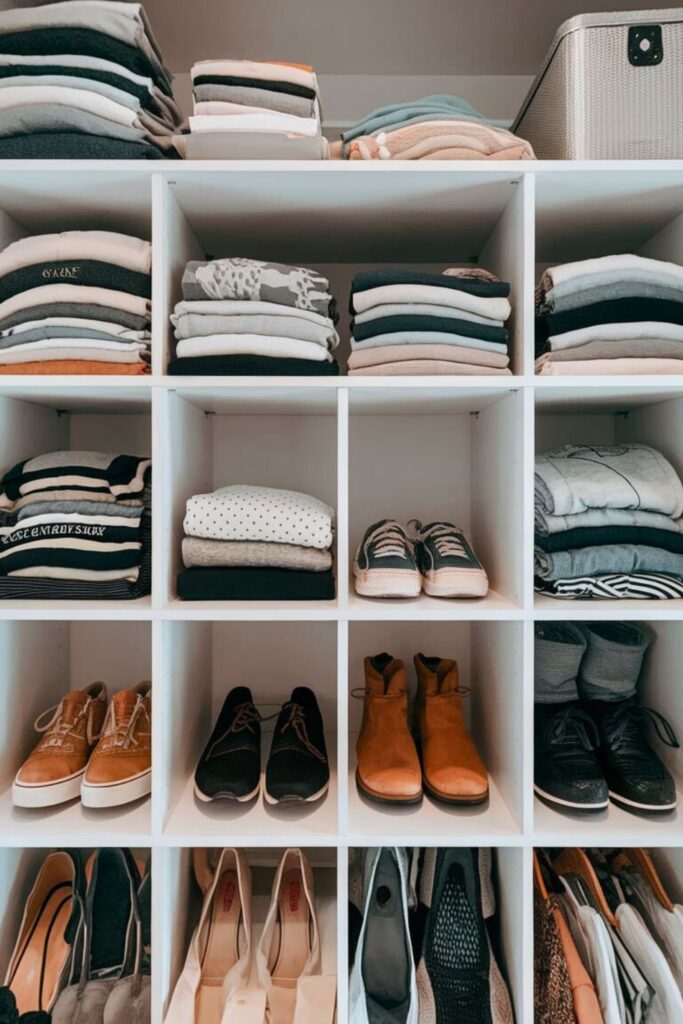
22. Store Shoes in Clear Boxes
Clear shoe boxes allow you to store shoes neatly while still being able to see what’s inside. Stackable and space-saving, these boxes help you maximize floor or shelf space in your closet.
These boxes prevent shoes from getting dusty or damaged while keeping pairs together. Because they’re clear, you can easily find the shoes you want without opening each box.
Choose boxes with ventilation holes to keep your shoes fresh, and label them if needed for even more organization.
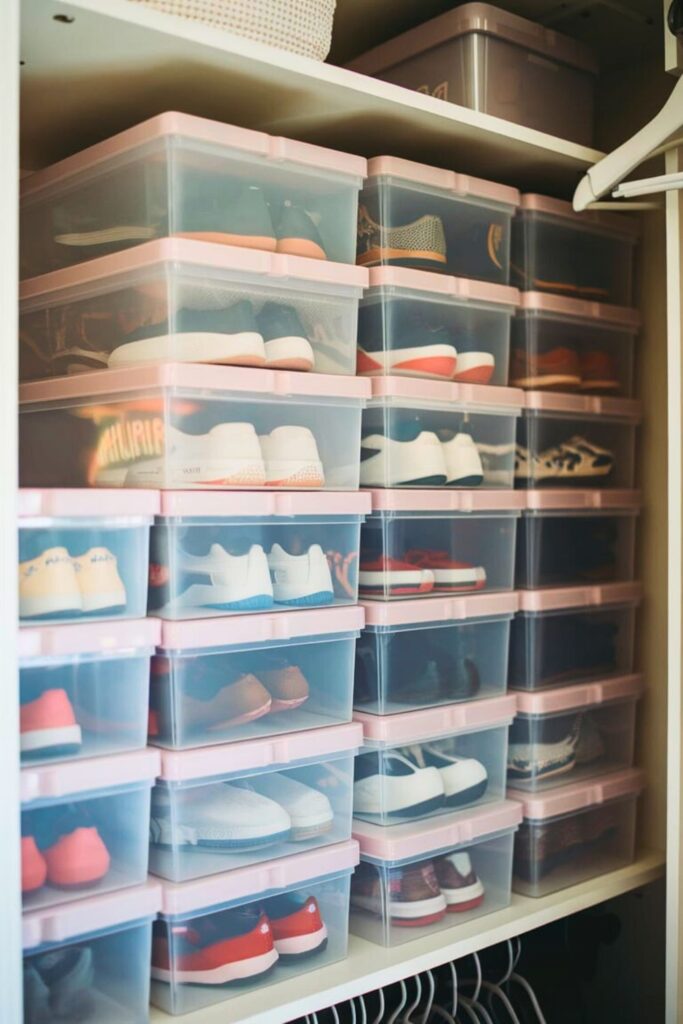
23. Install Sliding Closet Doors
Replacing swinging closet doors with sliding doors frees up valuable floor space. This solution allows you to place furniture or additional storage close to the closet without obstructing access.
Sliding doors are ideal for small rooms or closets that don’t have room for traditional doors. They also provide a sleek, modern look while making your space more functional.
Make sure to choose sturdy doors with smooth tracks to ensure easy operation.
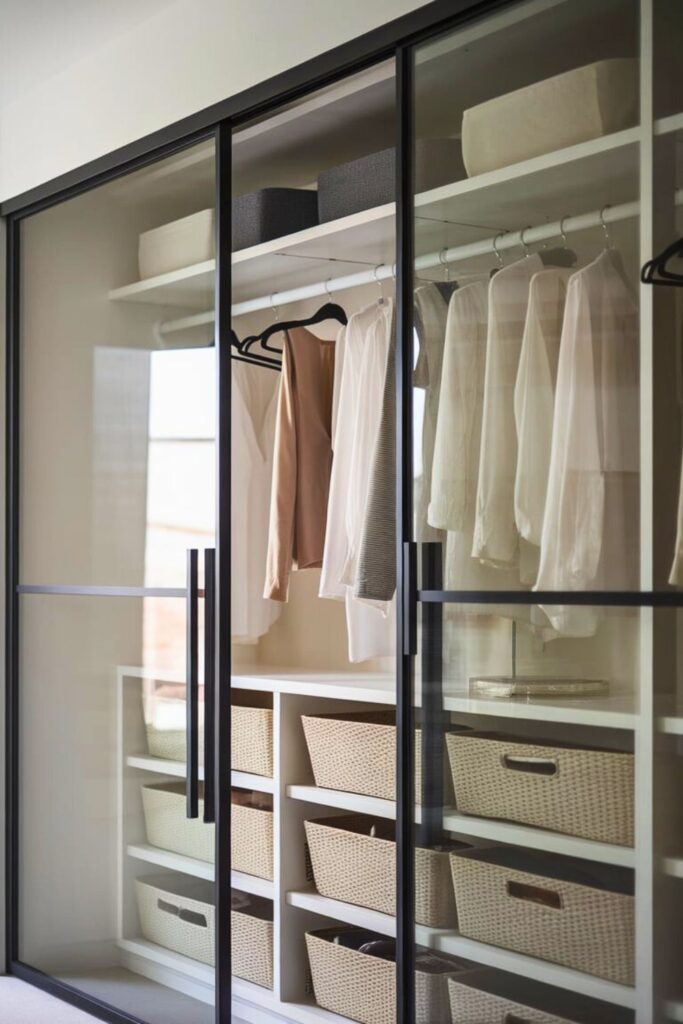
24. Use Hanging Jewelry Organizers
A hanging jewelry organizer is a great way to keep necklaces, earrings, and bracelets tangle-free and easy to find. Hang it inside the closet on a rod or hook, keeping it out of the way yet accessible.
These organizers come with pockets, hooks, or loops designed specifically for different types of jewelry, making them ideal for maximizing vertical space. They also keep jewelry visible, preventing you from forgetting what you own.
Choose an organizer with clear pockets for easier visibility or one that rotates for more storage.
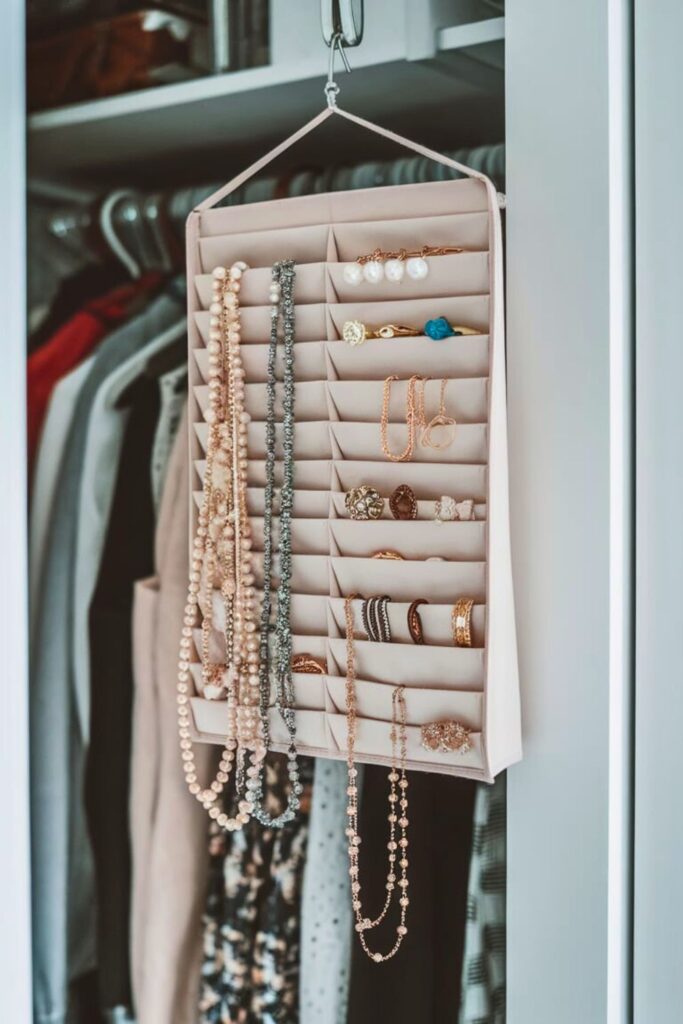
25. Add a Fold-Out Ironing Board
A fold-out ironing board is a smart solution for closets with limited space. Mounted on the inside of a closet door or wall, these boards fold out when needed and tuck away neatly when not in use.
This setup saves you from having to find a separate place to store a bulky ironing board. It’s ideal for people who iron regularly but don’t have the floor space for a full-size board.
Ensure the fold-out board is securely mounted and stable when extended.
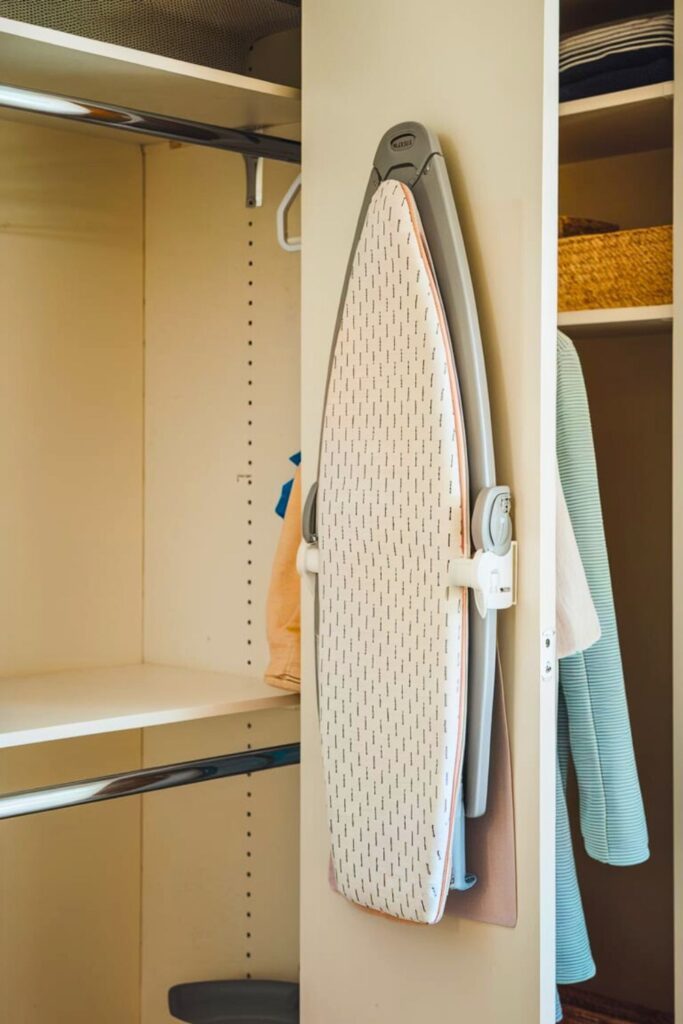
26. Install Light Strips
Add battery-powered light strips or motion-activated lights to brighten up dark closets. Proper lighting makes it easier to find what you’re looking for, especially in small, cramped spaces.
Install light strips along the shelves or ceiling of your closet for even illumination.
Motion-activated lights are a great option, as they turn on when you open the closet and turn off when it’s closed, conserving energy.
